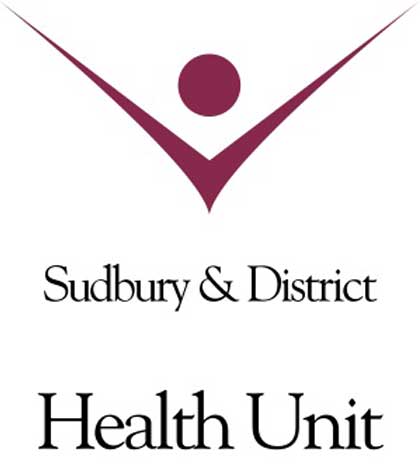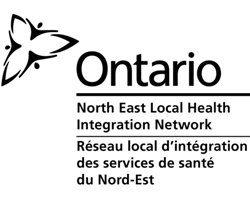MANITOULIN—In the Manitoulin District, 15 out of every 100 people aged 12 and up has tried some kind of illicit drug and four out of every five people used alcohol in the previous 12 months, and eight out of 10 people over the age of 12 years drink alcohol and at least two of those people are binge drinkers. It was with these types of statistics that a group of health and safety agencies on Manitoulin and Sudbury District have gotten together to form a harm reduction sub-committee, looking at initiatives to tackle the issue of substance misuse on the Island, and with it, a Manitoulin drug strategy has been developed and was supported by the Manitoulin Municipal Association (MMA) last week.
“I would like to thank you very much for allowing us to be here tonight to make this presentation to the MMA,” Christine Blake, chair of the Harm Reduction Subcommittee and outpatient addictions worker with HSN, said at a meeting last week. “Almost two years ago concerned community partners led by the Manitoulin Addiction and Mental Health partners committee and Harm Reduction sub-committee embarked on an initiative to look at issues of substance misuse on the Island.”
“I am here today with Brenda Stankiewicz from the Sudbury and District Health Unit and Mark Forsythe from M’Chigeeng M’Nendamowin Health Services,” Ms. Blake began.
“We are here today to inform you of the outcome of our discussions, to request support from councils for this strategy and to increase awareness of the issue of substance misuse,” said Ms. Blake. “You may ask, why a drug strategy? Because we have a problem with drug use in our communities and for the most part, this is a hidden problem.”
Ms. Stankiewicz explained, “every two years the Centre for Addiction and Mental Health (CAMH) surveys high school students. The 2013 survey revealed that, in the Sudbury and Manitoulin districts, approximately one-third of all youth in Grades 7 to 12 have tried at least one illicit drug (excluding alcohol, tobacco, energy drinks and steroids) in the previous 12 months. We also learned that almost one out of six youth in Grades 7 to 12 has used prescription medications to get high and most of them got these medications from home.”
“The CAMH says that in Ontario almost every second person has used marijuana at some point in their life,” said Ms. Stankiewicz. “With federal laws governing marijuana availability set to the revealed in 2017, we can expect this to change. In fact, a recent report out of Colorado, examining the impact of the 2013 marijuana legislation has uncovered some alarming results. With rising user rates, crime, addiction and social problems are on the rise.”
“Between 2010 and 2015, of the 59 occurrences of drug seizures in the North East Region, the OPP tells us that 28 were in the Manitoulin Island area,” she continued. “In 2012, during Operation Swingbridge, there were 43 drug offences charges laid with drug seizures worth $306,000. In 2014 there were 324 substance-related charges laid including 169 liquor license charges, 82 impaired driving charges and 66 drug possession charges.”
“Substance misuse keeps health professionals busy too. There were 597 mental health and substance abuse visits to the Manitoulin Health Centre in 2014,” continued Ms. Stankiewicz, adding that “one in five of these were repeat visits within 30 days.”
Over 150 people access methadone maintenance therapy at clinics on the Island. “This is good news because methadone and suboxone are harm reduction measures that help people return to a productive life, instead of spending time in drug seeking behaviours,” she said. “Upon closer examination, there are 44,000 people who access methadone maintenance therapy in Ontario; a province of 13.6 million. This represents 0.3 percent of the population. With a population of 13,000 on the Island, people in methadone maintenance programs represent 1.2 percent of our population.”
Ms. Stankiewicz also explained between 2008-2014, Ontario Chief Coroner office indicated that 11 people on Manitoulin Island died of opioid drug toxicity. “The OPP tells us that in that same time frame, 10 people died in motor vehicle crashes both on road and off road.”
“These are not just numbers, these people are us,” said Ms. Stankiewicz. “No one ever plans to become addicted. Substance misuse sometimes starts with peer pressure, a dare or a prescribed pain medication because of an injury or surgery. Others use drugs to cope with hardship, using substances to numb pain and escape problems such as family stress, neglect, poverty, physical or sexual abuse, poor living conditions, early childhood experiences, unemployment, low education, illiteracy and more.”
For some people, living without their substances is not possible. Harm reduction measures such as a methadone maintenance program or safe needle exchange reduce the health risks associated with substance misuse, said Ms. Stankiewicz. “Recovery needs to be celebrated. As a community, we can offer support to those who are working to remain substance-free.”
Mr. Forsythe said, “together with our partners we have been working toward the development of a drug strategy. A drug strategy is a coordinated, comprehensive approach that balances public order and public health in order to create a safer, healthier community. This drug strategy, reflecting diverse roots and visionary wings, seeks to find ways to work in collaboration to promote health and prevent substance misuse, restore and maintain community safety and advocate for services and support for people living with addiction and their loved ones.”
Mr. Forsythe noted, “our work will focus on four key directions: health promotion and education to prevent the misuse of substances is key to developing a community commitment to reducing the harms associated with substance abuse. The more we know about substance misuse, the better prepared we will be to act; community safety, working with enforcement and justice will encourage people to form a community of care in which we are each responsible for the other; collaboration and cooperation are building blocks for community development and engagement. Communities work and acting together will ensure that we will all feel included; services and support includes efforts in the areas of harm reduction, treatment and advocacy.”
“As people in need find a caring community to support them on their journey, they will find ways to get well,” said Mr. Forsythe.
Ms. Blake told the meeting, “to date we have received letters of support from Manitoulin Family Resources, Health Sciences North and Manitoulin Health Centre, the OPP, Aundeck Omni Kaning and the SDHU.”
“With the support of council we begin to bring this vision to life as we develop an action plan with our communities and increase awareness and education about substance misuse,” continued Ms. Blake.
The MMA members agreed to pass a motion endorsing the harm reduction committee drug strategy and submit to each individual Manitoulin municipality for its acceptance as well.





